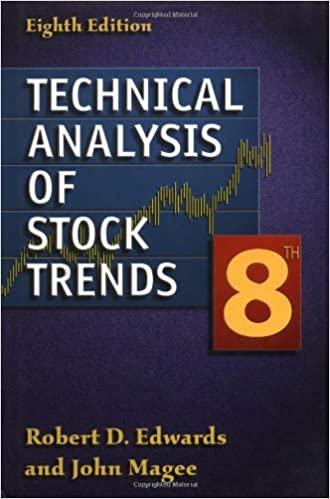Question
Use the attached Income Statement and Balance Sheet to compute the required financial ratios for Seward Inc. and compare to the industry averages. After that,
Use the attached Income Statement and Balance Sheet to compute the required financial ratios for Seward Inc. and compare to the industry averages. After that, write a brief summary as to what each ratio is measuring and how Seward compares to the industry. For example, you may find that Seward's Inventory Turnover is not as high as the industry average, so they are either not managing their inventories or may be experiencing a decrease in sales. You can plact the ratios and summary right in Excel, and then upload that file here.
| Seward Industries | |
|
|
|
| INCOME STATEMENT | |
| Sales | $ 4,500 |
| COGS | (2,800) |
| Gross Profit | 1,700 |
| Operating Expenses: |
|
| S,G,&A | (1,000) |
| Depreciation Expense | (200) |
| Total Operating Expenses | (1,200) |
| Operating Profits | 500 |
| Interest Expense | (60) |
| EBT | 440 |
| Income Taxes | (125) |
| Net Income | 315 |
|
|
|
| BALANCE SHEET |
|
| Cash | $ 500 |
| Accounts Receivables | 600 |
| Inventories | 900 |
| Total Current Assets | 2,000 |
| Gross Fixed Assets | 2,100 |
| Accumulated Depreciation | (800) |
| Net Fixed Assets | 1,300 |
| Total Assets | 3,300 |
|
|
|
| Liabilities & Equity |
|
| Accounts Payable | 500 |
| Short Term Notes | 300 |
| Total Current Liabilities | 800 |
| Long Term Debt | 400 |
| Total Liabilities | 1,200 |
| Common Equity: |
|
| Common Stock | 500 |
| Retained Earnings | 1,600 |
| Total Common Equity | 2,100 |
| Total Liabilities and Equity | 3,300 |
a. Compute the ratios listed below for Seward and compare to the industry averages. Provide an explaination for how well you think Seward is performing as compared to others in the industry.
Current ratio
Days in receivables
Days in inventory
Net return on assets (ROA)
Operating profit margin
Total Debt to Assets
Times interest earned
Return on Equity
INDUSTRY AVERAGES
Current ratio 3.0
Days in receivables 40.0
Days in inventory 70.2
Net return on assets (ROA) 12.5%
Operating profit margin 8.0%
Total Debt to Assets 33%
Times interest earned 6.0
Return on Equity 11.0%
Step by Step Solution
There are 3 Steps involved in it
Step: 1

Get Instant Access to Expert-Tailored Solutions
See step-by-step solutions with expert insights and AI powered tools for academic success
Step: 2

Step: 3

Ace Your Homework with AI
Get the answers you need in no time with our AI-driven, step-by-step assistance
Get Started


